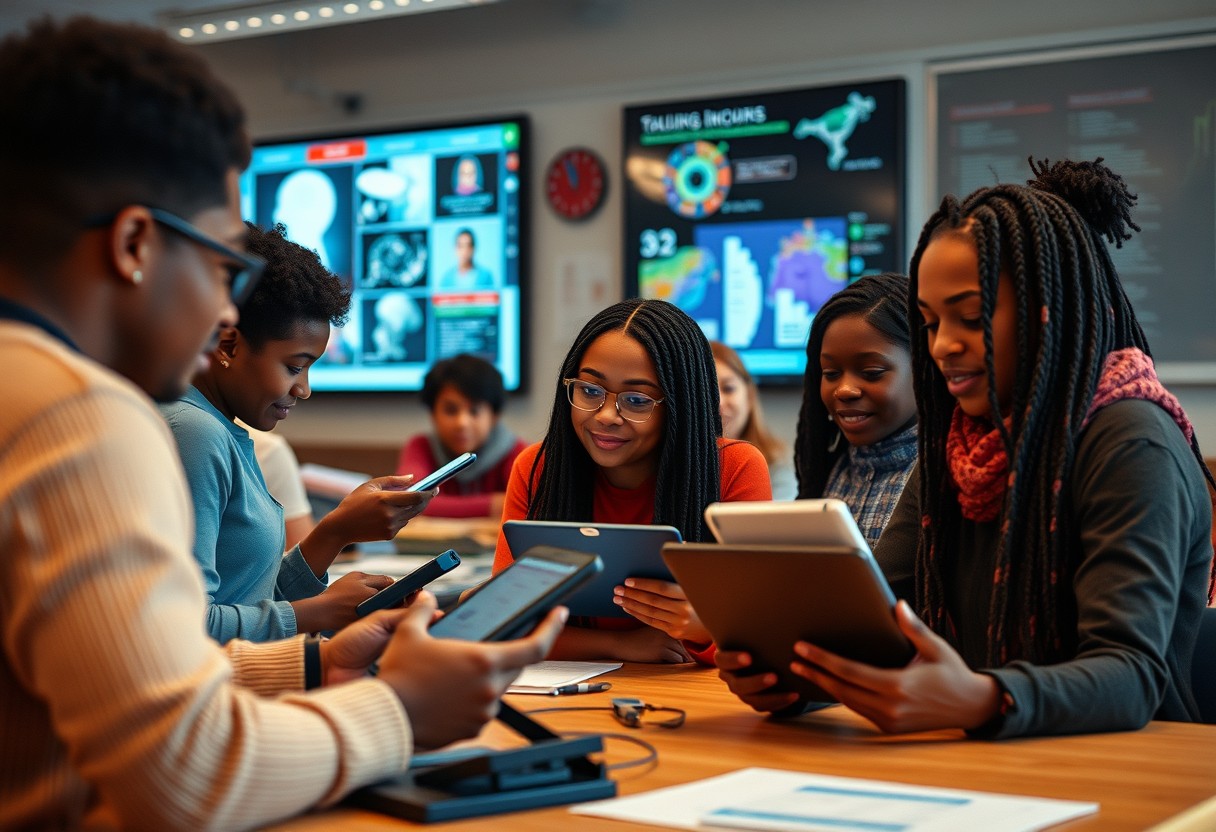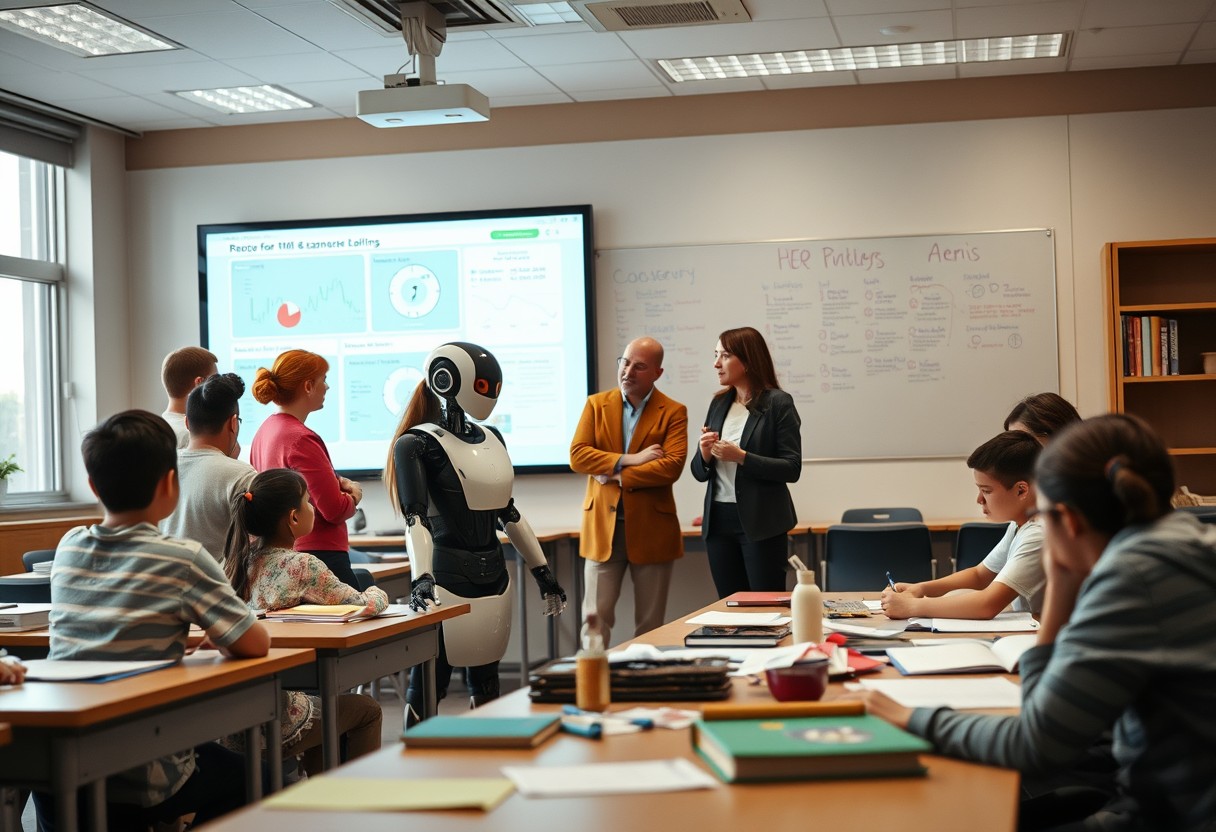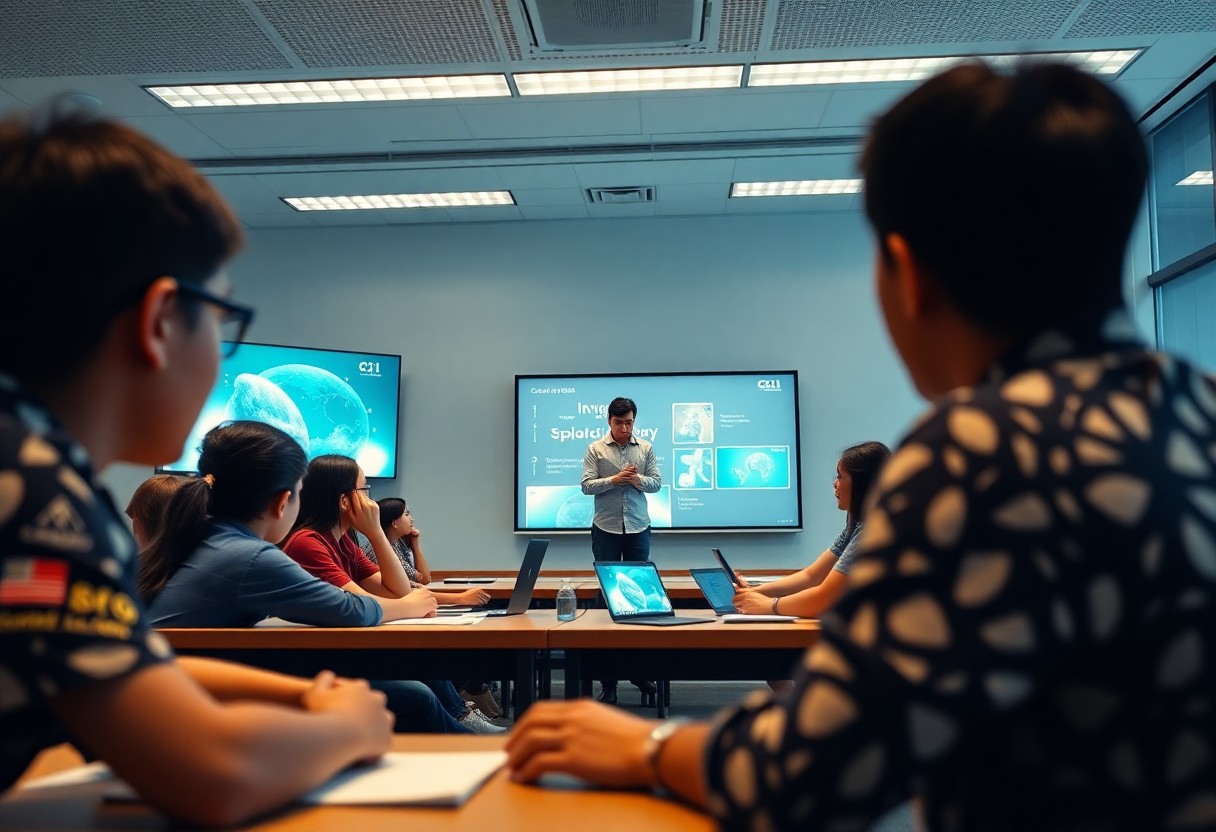Most educators and administrators are constantly seeking innovative ways to improve learning experiences for all students. In this blog post, you’ll explore how machine learning can be leveraged to create a more inclusive educational ecosystem, addressing diverse learning needs and breaking down barriers. With its ability to analyze data and personalize learning, machine learning has the potential to empower you to develop tailored strategies that enhance engagement and success for every learner, ensuring that no one is left behind in the classroom.
Key Takeaways:
- Personalized Learning: Machine learning can analyze student data to create tailored educational experiences that cater to individual learning styles and needs, making education more accessible for diverse learners.
- Identifying Barriers: By leveraging data analytics, machine learning can identify systemic barriers and biases within educational systems, allowing for targeted interventions that promote inclusivity.
- Scalability: The implementation of machine learning tools can scale inclusive educational practices across different regions and demographics, ensuring that quality education reaches underserved communities.
The Role of Machine Learning in Education
For educators and students alike, machine learning is transforming the educational landscape by providing valuable insights and tailored experiences. By analyzing vast amounts of data, machine learning algorithms can identify patterns in student performance, personalize learning pathways, and support teachers in delivering effective instruction. This technology not only enhances academic achievement but also promotes an inclusive educational environment where all learners can thrive.
Enhancing Personalized Learning
Education today increasingly emphasizes personalized learning experiences that cater to individual student needs, and machine learning plays a crucial role in this process. By leveraging data about your learning behaviors and preferences, machine learning systems can offer customized content recommendations, pacing, and assessments, allowing you to learn at your own speed and style. This tailored approach ultimately leads to deeper engagement and improved academic outcomes.
Addressing Diverse Learning Needs
Enhancing educational strategies requires a keen understanding of the diverse learning needs present in any classroom. Machine learning helps in categorizing these needs effectively, enabling personalized interventions that give every student a fair chance to succeed. By analyzing data collected from various sources, machine learning can assist teachers in finding the best approaches to support students with differing capabilities, learning styles, and backgrounds.
Learning through machine learning tools can significantly dismantle barriers that hinder students from achieving their full potential. By identifying individual learning preferences and pinpointing challenges, machine learning algorithms enable you to receive targeted interventions that address your specific needs. These personalized approaches ensure that you are not left behind and encourage a proactive learning environment. Embracing this technology fosters a more equitable educational ecosystem where everyone can shine, regardless of their unique learning journey.
Challenges to Implementing Machine Learning in Education
Some of the major challenges to implementing machine learning in education include the integration of technology into existing systems, lack of teacher training, and potential biases in algorithms. You may encounter difficulties adapting traditional teaching methods to embrace personalized learning experiences driven by machine learning. Additionally, establishing infrastructure, ensuring user-friendly platforms, and generating widespread acceptance among educators and stakeholders can pose significant hurdles on the path to effective implementation.
Equity and Access Issues
Education systems face equity and access challenges when integrating machine learning technologies. You must consider that not all students have equal access to the necessary devices and internet connectivity. Disparities in resources can exacerbate existing educational inequalities, leaving marginalized groups further behind. Ensuring equitable access to machine learning tools is crucial for fostering an inclusive educational ecosystem.
Data Privacy and Security Concerns
Machine learning applications in education come with data privacy and security concerns that cannot be overlooked. You should be aware that the collection and analysis of student data may expose sensitive information to risks. It is imperative for educational institutions to establish robust data protection measures to safeguard students’ personal information while maintaining compliance with legal regulations.
Equity in data privacy means ensuring that all students, regardless of socioeconomic background, have their information protected equally. You need to understand that marginalized groups often face higher risks of data breaches or misuse. By prioritizing the highest levels of data security and incorporating transparent policies, educators can create a safer environment where students feel secure sharing their information in pursuit of personalized learning experiences.
Potential Benefits of an Inclusive Educational Ecosystem
Unlike traditional educational models that may overlook diverse learning needs, an inclusive educational ecosystem can transform the learning landscape. By harnessing machine learning, you can create tailored educational experiences that accommodate the unique backgrounds and abilities of all students. This approach not only enhances student engagement but also fosters a sense of belonging, enabling everyone to thrive in their academic pursuits.
Bridging Educational Gaps
One of the most impactful benefits of an inclusive educational ecosystem is its ability to bridge educational gaps. Through machine learning algorithms, you can identify and address disparities in resources, learning styles, and support systems. This data-driven approach allows you to implement targeted interventions that meet the specific needs of underrepresented or disadvantaged students, ensuring a more equitable educational experience for all.
Supporting Teachers and Educators
The role of teachers and educators is crucial in fostering an inclusive educational environment. With machine learning tools, you can receive personalized insights and recommendations that empower you to adapt your teaching methods and materials to meet the diverse needs of your students. This support not only enhances your effectiveness but also boosts your confidence in addressing the varying challenges faced by learners.
With the integration of machine learning, educators can access real-time data on student performance and engagement, enabling you to identify patterns and adjust your instructional strategies accordingly. This proactive approach helps you to recognize students who may require additional support or enrichment, fostering a more inclusive environment where no one falls through the cracks. By streamlining administrative tasks, you can focus more on meaningful interactions with your students, ultimately enhancing their educational experience.

Policy Implications for Integrating Machine Learning
Not addressing the policy implications of machine learning in education can create disparities that hinder the creation of an inclusive educational ecosystem. You must understand that effective policies should support equitable access to learning opportunities and resources. By considering the unique needs of diverse learners, you can shape a framework that enables schools and educational institutions to adopt machine learning technologies responsibly and inclusively.
Developing Inclusive Policies
Policy initiatives must explicitly promote equity by incorporating the perspectives of marginalized groups. By prioritizing inclusivity in educational technology, you can ensure that machine learning serves as a tool for empowerment rather than exclusion. This requires comprehensive stakeholder engagement to develop guidelines that are both effective and equitable.
Fostering Collaboration Among Stakeholders
Collaboration among diverse stakeholders is necessary for ensuring that machine learning technologies are developed and implemented in an inclusive manner. You should encourage partnerships between educators, policymakers, tech developers, and community organizations, allowing each variety of expertise to enrich the decision-making process. Such collaboration also facilitates the sharing of resources and best practices, encouraging innovation that reflects the needs of all learners.
Among these stakeholders, educators play a pivotal role in articulating the challenges and opportunities machine learning presents in their classrooms. You need to foster open dialogues that allow teachers to share insights about the specific needs of their students. Similarly, policymakers must align their strategies with technological advancements and educators’ experiences to create frameworks that enhance inclusive learning. Engaging community organizations can amplify the voices of underrepresented groups, ensuring that the collaborative efforts reflect the rich diversity within the educational ecosystem. Ultimately, by nurturing these collaborations, you can help build a more robust and inclusive educational landscape for everyone.
Future Trends in Machine Learning and Education
Once again, machine learning stands on the brink of transforming education, paving the way for personalized learning pathways and inclusive practices. The integration of intelligent algorithms can help educators better understand individual student needs, track progress, and adapt coursework accordingly. As systems evolve, your ability to harness data analytics and predictive modeling in a classroom setting will enable you to address disparities, ensuring every student has the tools necessary for success.
Innovations in Technology
The latest advancements in technology are reshaping how educational institutions operate, making learning more accessible and tailored for all. You can expect innovations like virtual reality and adaptive learning platforms, driven by machine learning, to create immersive and personalized learning experiences. These technologies will not only enhance engagement but will also allow you to reach students with various learning styles and needs, fostering a more inclusive educational environment.
Evolving Educational Practices
One critical shift is the increasing emphasis on data-driven teaching strategies. As you adopt a more analytical approach to education, you gain insights into student behaviors, learning preferences, and performance metrics, which can inform your instructional methods and curriculum design.
It is vital to recognize that evolving educational practices require you to become adept at interpreting data and fostering a culture of continuous improvement. Utilizing machine learning tools can help you identify trends and adapt your teaching strategies to meet diverse learning styles. By engaging with these practices, you position yourself to break down barriers, ensuring a more equitable learning experience for every student in your classroom.
Recommendations for Stakeholders
All stakeholders must prioritize collaboration to maximize machine learning’s potential for inclusivity in education. You should foster partnerships among educators, technology developers, and policymakers to create accessible and adaptable learning environments. Continuous training and professional development will equip educators to effectively integrate these tools. Moreover, you must advocate for transparent algorithms that mitigate biases, ensuring that every student’s unique needs are considered in the educational process.
For Educators and Institutions
For you as educators and institutions, embracing machine learning tools can enhance personalized learning experiences. By actively seeking out resources and training, you can develop inclusive teaching strategies that address diverse learning styles. Collaboration among educators can also lead to sharing best practices that leverage these technologies to support all students effectively.
For Policymakers and Technology Developers
Educators and technology developers must collaborate closely to create supportive policies that promote equitable access to machine learning resources. You should advocate for funding and initiatives that prioritize inclusivity in educational technology. Regular assessments of these tools to ensure they address the diverse needs of learners will be paramount in creating a truly integrated educational ecosystem.
Technology plays a crucial role in enhancing educational equity when designed with inclusivity in mind. You should focus on developing AI systems that are user-friendly and easily accessible, ensuring that all students, regardless of their background or abilities, can benefit from personalized learning experiences. Moreover, advocating for regulations that require transparency in algorithmic decision-making will help eliminate biases and promote fairness in education. Your commitment to ongoing research and user feedback will be imperative in refining these technologies for the betterment of all learners.
To wrap up
With this in mind, you can see how machine learning holds the potential to enhance inclusivity in education by personalizing learning experiences, identifying unique student needs, and providing targeted support. By leveraging these technologies effectively, you can create a more equitable educational ecosystem that accommodates diverse learning styles and abilities. Your ability to harness the power of machine learning not only enhances individual achievements but also fosters a culture of inclusivity that benefits all students, making education a more accessible and supportive journey for everyone.
FAQ
Q: How can machine learning contribute to personalized learning experiences in education?
A: Machine learning can analyze individual student performance and learning styles to tailor educational content to their needs. By processing vast amounts of data from assessments, interactions, and learning behaviors, machine learning algorithms can identify specific areas where students struggle or excel. This enables educators to create customized learning paths that engage students more effectively, catering to diverse learning preferences and fostering inclusivity by addressing gaps in knowledge for students with different backgrounds and abilities.
Q: What role does machine learning play in identifying and supporting at-risk students?
A: Machine learning can play a crucial role in early identification of at-risk students by analyzing data patterns that may indicate potential challenges, such as declining grades, low engagement in class activities, or attendance issues. By utilizing predictive analytics, educators can intervene proactively to provide additional support or resources tailored to individual needs, thereby fostering a more inclusive environment. This approach not only helps at-risk students but also ensures that all students receive the support necessary to succeed in their educational journey.
Q: Can machine learning help reduce biases in educational assessments and grading?
A: Yes, machine learning can help reduce biases in educational assessments and grading by providing objective analysis of student performance data. Traditional grading practices can sometimes reflect subjective biases, but machine learning algorithms can evaluate student work based on predetermined criteria and offer unbiased feedback. Additionally, these systems can be designed to recognize and mitigate any existing biases in the evaluation processes. By promoting fairness in assessments, machine learning contributes to a more equitable educational ecosystem, ensuring that all students are judged based on their true capabilities rather than external factors.




